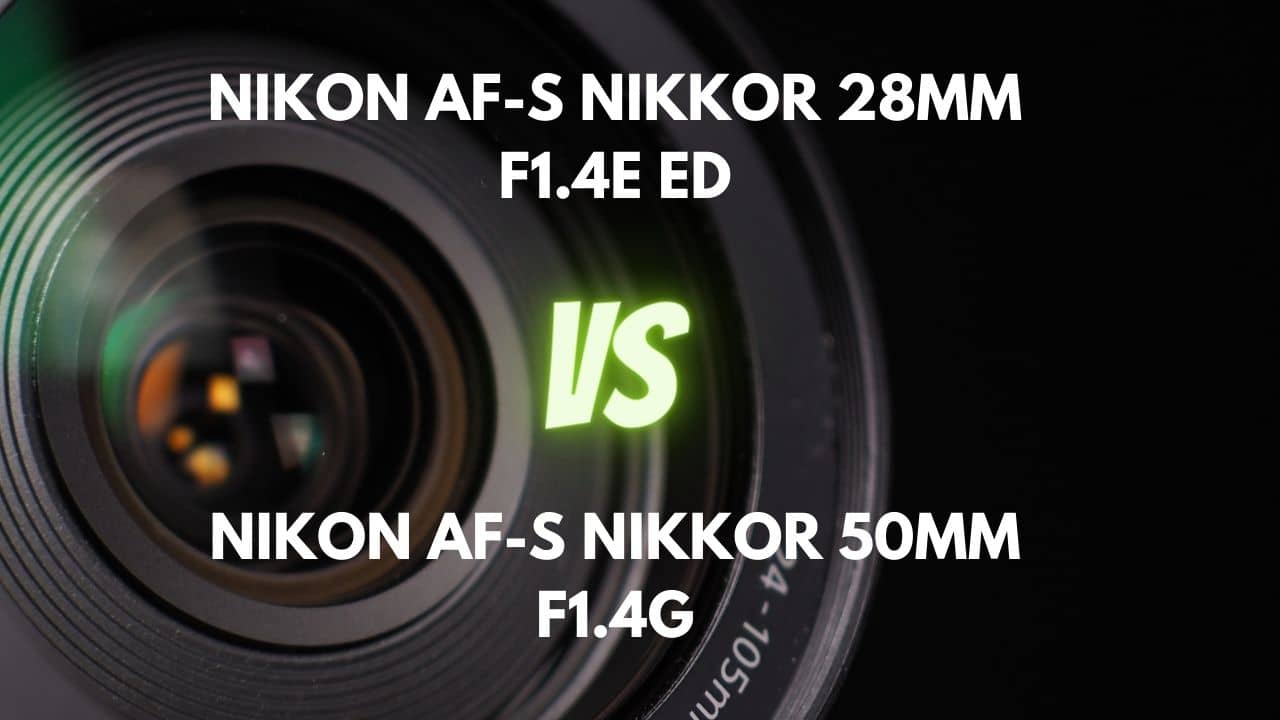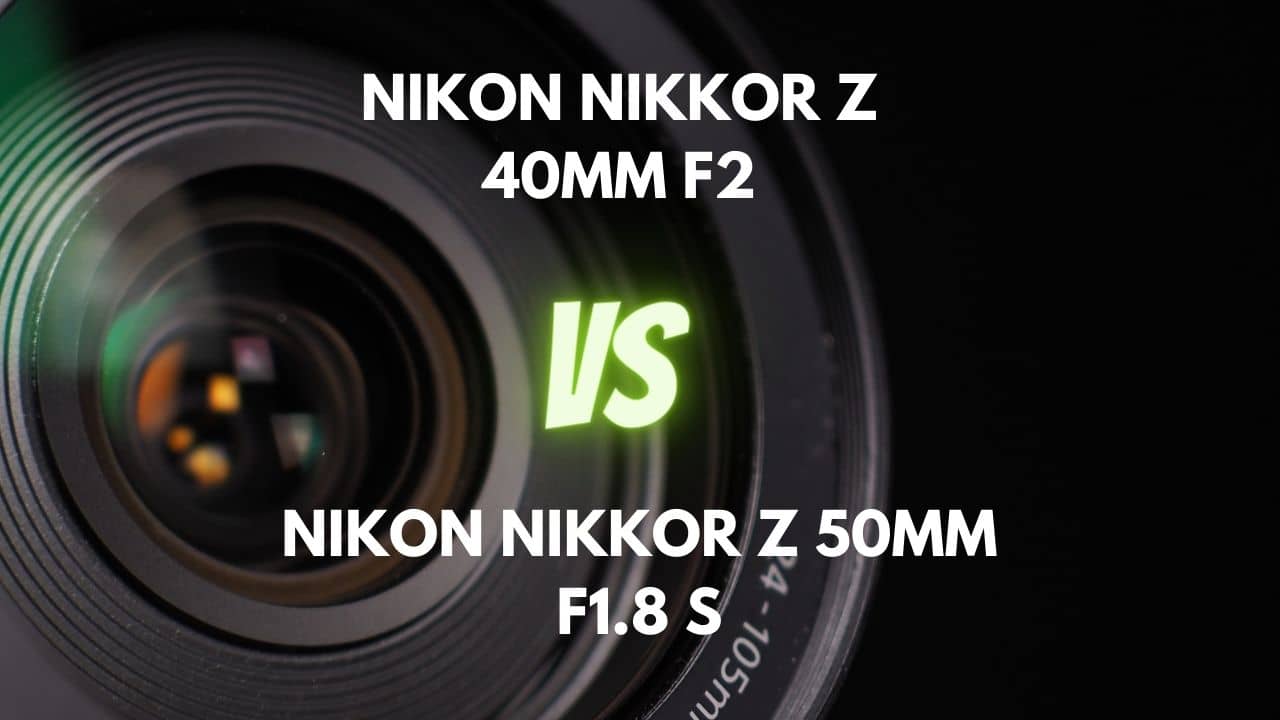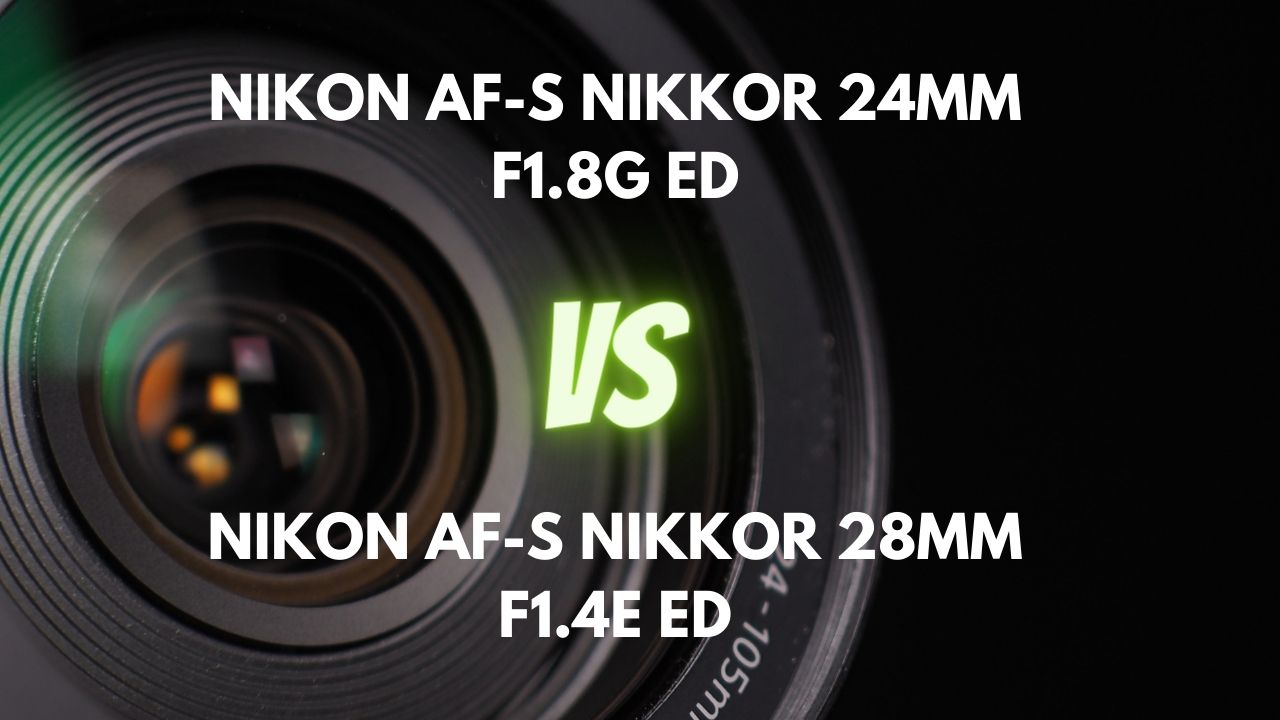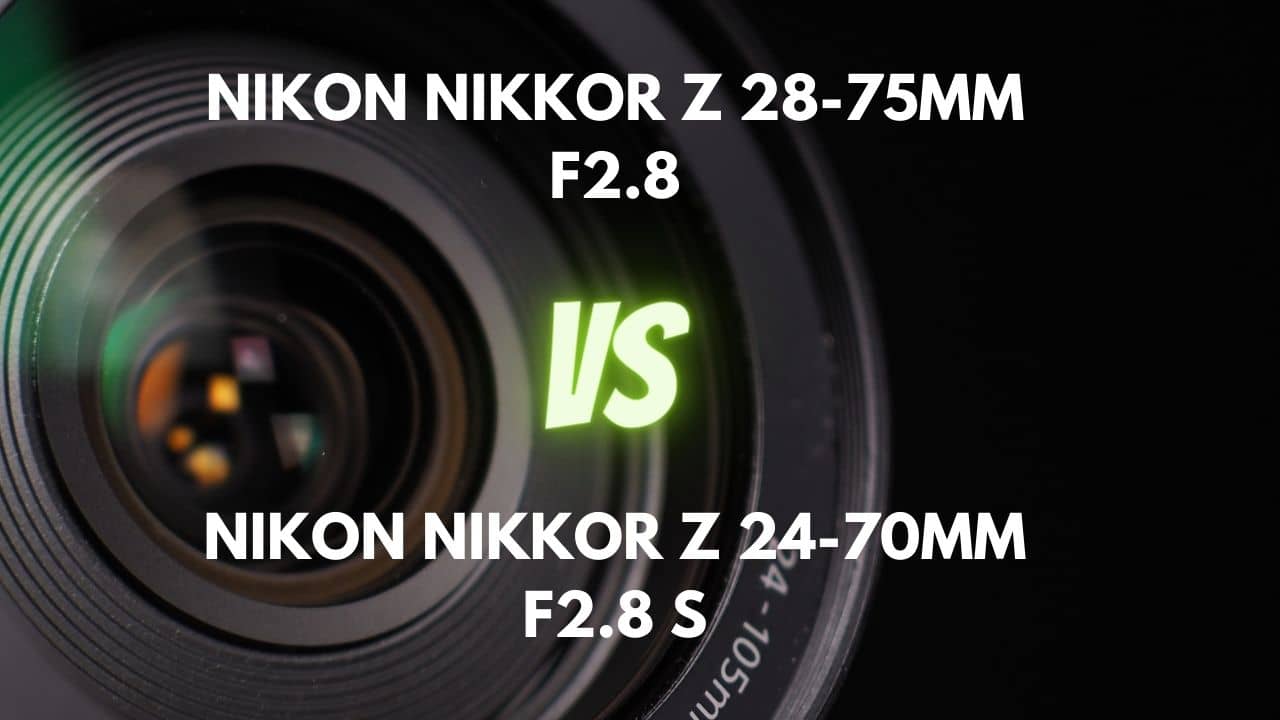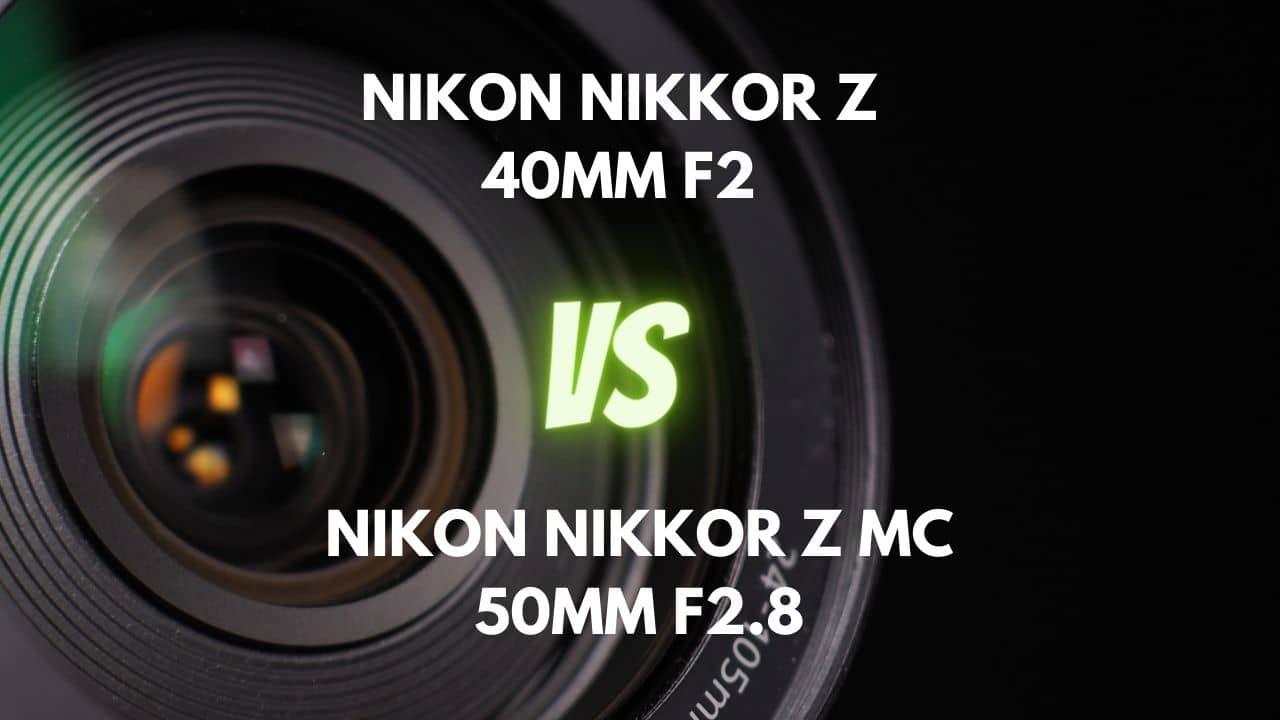As a beginner photographer, you must have heard about the term nifty-fifty. It refers to the 50mm prime lens. This is a prevalent lens among beginners and advanced and professional users. There are many reasons why the 50mm prime is one of the best lenses in the business. I will discuss the many facets of this lens, its advantages and disadvantages, and the many scenarios under which this lens is helpful.
Why Should Every Photographer Own a 50mm Lens?
The 50mm prime is widely considered a standard prime because it offers an angle of view close to the human eye. A 50mm prime has minimal distortion, and that’s another advantage of these lenses. Not to mention the shallow depth of field that these lenses offer, allowing you to experiment with the background separation of the subject.
Affordability
The 50mm prime is one of the most cost-effective lenses out there. The cheapest 50mm prime, the 50mm f/1.8, retails for less than 150 dollars (the Canon nifty-fifty), and that’s a real bargain when you consider the benefits this lens brings to the table.
For comparison, Nikon’s 50mm f/1.8G prime retails at just under 200 dollars, and that’s an excellent value for money. Considering the price of some of the kit lenses and the value that those lenses bring on to the table, the nifty-fifty is a real bargain.
That being said, not all 50mm primes are so cost-effective. Some expensive 50mm primes include the Canon RF 50mm F/1.2L USM. It costs more than $2000 and is one of the priciest pieces of glass you can get your hands on.
But by and large, you can get some excellent pieces of glass for under four hundred dollars that will give you a fast wide aperture to work with.
Make You a Better Photographer
The 50mm is a hard-working photographer’s tool. This is because the 50mm is a prime, and just like every short focal length prime lens, this one also warrants that for changing the perspective, you use your feet.
There is no optical zoom ring that you can tweak and change the focal length. You will have to use your feet to move forward and back to change the composition. That will help you understand your subject and pay more attention to it when composing your images.
In turn, you become more tuned to your lens. Whenever you see something interesting, you begin to think about the angle of view your 50mm prime will give you. You become a better photographer because you’re well-tuned with your prime shooting lens.
One of the best examples of this photography tool and camera relationship is that of the legendary Henri Cartier-Bresson, and his Leica fitted with a 50mm prime.
Force You to Explore Your Creativeness
As a photographer, it’s straightforward to tweak the zoom ring, get in close to a subject and shoot images. You don’t have to move your feet, and there is, as the case is, very little thinking behind a composition.
These days with cameras becoming increasingly smarter, anyone can aim and click the shutter and take great-looking crisp images. The real question is, are those snaps worth looking at?
As a serious photographer, you must ask yourself why someone would look at your photos. Am I capturing something that’s thought-provoking? Am I capturing something better than an average snap?
A 50mm prime will push you to look long and hard at your compositions. It’s self-realization that’s important to push yourself and dig deep into your creativity.
Portable Size
The portable size of the 50mm prime is a significant reason why many photographers don’t mind carrying one in their camera bag. Some photographers swear by the 50mm prime, the only lens they would pick if they had to pick anyone.
Portability is essential, especially if you’re not happy lugging heavy gear on your shoulders for the best part of the day. Because the 50mm prime is a lightweight, easy-to-use, and sharp lens, photographers never mind keeping one in their kit lens as a second choice.
That said, not every 50mm prime is a lightweight lens. The Nikon AF-S NIKKOR 50mm f/1.8G weighs only 185 grams, while the Canon RF 50mm f/1.2 L USM weighs nearly a kilo.
So, you’ve to be careful when choosing the 50mm prime you want.
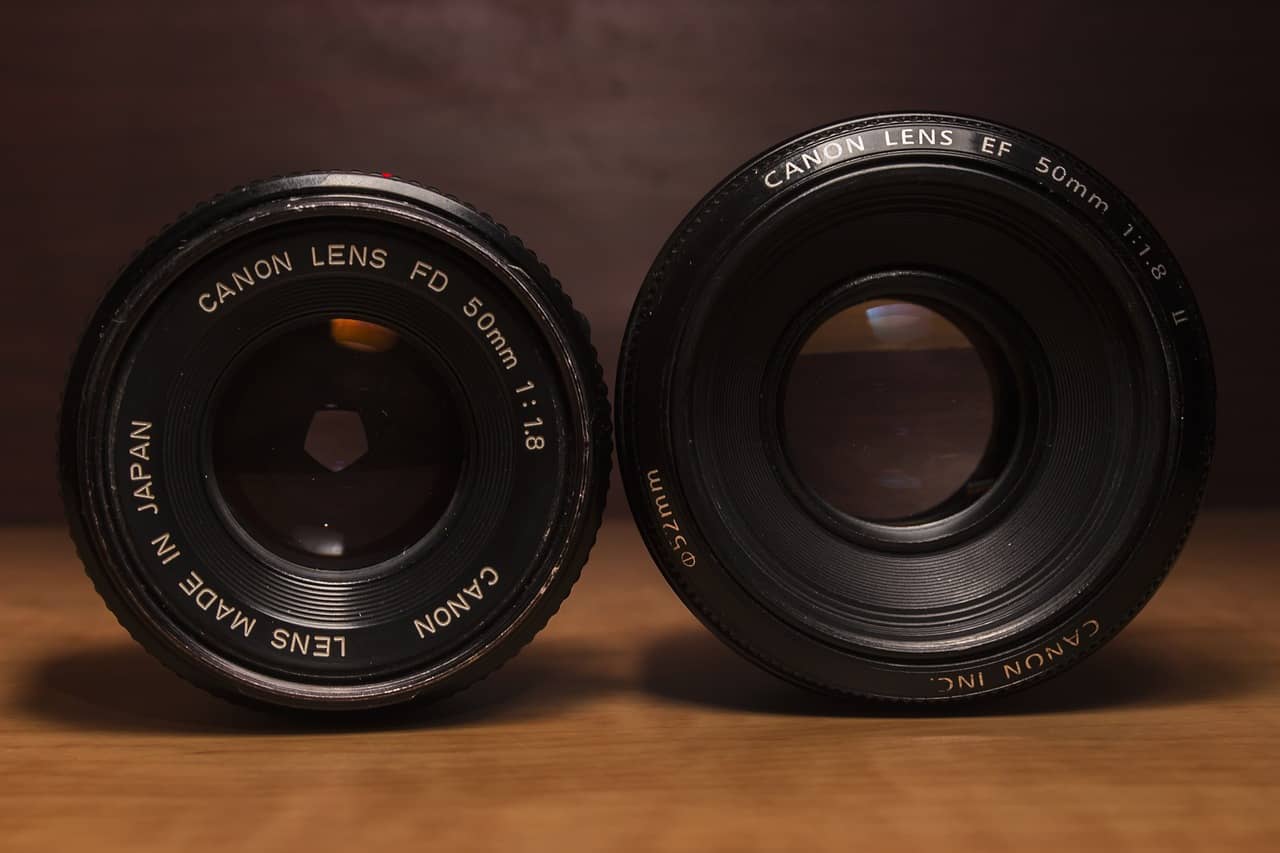
Bokeh
The 50mm prime is an excellent lens for capturing fantastic bokeh. Bokeh is that blurry background behind the subject in a portrait image. This is a great way to isolate the subject from the background and obscure anything uninteresting.
Professional photographers often use this technique to obliterate less-than-interesting backgrounds.
The quality of the bokeh possible with a lens depends on the aperture, the number of aperture blades, and the shape of those aperture blades.
Besides a wide-open aperture, these lenses also come with several aperture diaphragm blades that help produce nice rounded bokeh.
Sharpness
The 50mm prime is one of the sharpest lenses in the business. It’s sharp even when wide open. They don’t have many moving parts inside them, that’s why they are sharper than traditional zoom lenses.
So if it’s subject sharpness you’re looking for, you don’t have to look further than a 50mm prime. Some of the sharpest 50mm primes I have seen include the Canon RF 50mm f/1.2 L USM and the Nikon Z 50mm f/1.8 S.
Versatility
The 50mm is a very versatile glass. Yes, we often think of the 50mm as an everyday photography lens, but it does more than shoot everyday photography.
But you can’t shoot wildlife and sports photography because the focal length isn’t long enough, and architecture photography because the angle of view isn’t suitable.
Low-Light Performance
One of the areas where the 50mm prime comes into its own is in low-light situations. A typical 50mm prime has an aperture of at least f/1.8. That’s two stops faster than a popular kit lens such as the 18-55mm f/3.5–5.6.
A two stops-faster aperture is an incredible advantage when shooting in low-light situations. You can open the aperture and use a faster shutter speed without worrying about motion blur. Alternatively, in typical low-light situations where you usually would have to push the ISO to a higher number, you can keep the ISO low and compensate by opening up the aperture to a higher number.
What Is a 50mm Lens Used For?
The 50mm prime is a versatile piece of glass. There are many different genres of photography where the lens is helpful. Let’s look at a few such genres and the applicability of the lens for shooting such genres of photography.
For Portraits
The 50mm prime is particularly useful because it is an excellent portrait lens for most situations. Many of you will point out that the 50mm prime isn’t a portrait-length lens. The best portrait-length is 85mm. But you can shoot portraits with a 50mm prime if you know what you’re doing.
You have to leave a lot of space around the subject, which will reduce any potential distortion. In any case, the 50mm isn’t a lens that’s infamous for distortions. Lenses more comprehensive than the 50mm prime is more prone to perspective distortions. For example, the 20mm prime and the 14-24mm zoom.
The 50mm is also very useful for capturing environmental portraits. All you need to do is leave space around your subject, which isn’t all that difficult, especially if you take a few steps back, and then shoot with the subject at the center of the frame.
With the 50mm prime, you don’t have to force yourself to try and capture the whole body of the subject. You can photograph from the waist up or shoot three-fourths of the body without including the legs.
Even though the 50mm suffers very little from distortions, the edges are where the distortions will be the maximum. If you try to squeeze everything together and take the composition to the center of the frame, the peripheral edges will be slightly distorted, where the issues will be. Cropping out the legs will be a much easier way to resolve distortion issues.
Another tip is to try squeezing in more of the subject with the portrait orientation rather than the default landscape orientation.
Even if the 50mm prime is optimized for the larger image circle of full-frame cameras, you can mount this lens on APS-C cameras and shoot different genres of photography.
Because of the crop factor, the lens’s effective focal length becomes the equivalent of a 75mm lens (on Nikon APS-C cameras) or 80mm (on Canon APS-C cameras). The effective focal length is ideally suitable for shooting portrait photos.

Some photographers find it difficult to work with the Eye AF tool. Let’s say you’re shooting with the Canon EOS R3 and find it difficult to set the eye AF to nail the subject’s eye with a 50mm prime lens.
After activating the Eye AF feature using the set button on your EOS R3, half press the shutter button so the camera can identify the eyes and faces in the scene.
Once the eyes and faces have been identified, you’ve to look at the eye or face you wish to focus on and press the shutter button.
At this point, the camera takes over. A blue box appears, marking the subject’s eye, and then the camera keeps tracking the subject’s eye. Mind you, you’ve to keep the shutter button pressed down so that the camera can keep following the subject.
What happens when a new subject enters the frame or you wish to change the focus and focus on some other face? Let go of the shutter button.
Again, half press to identify the eyes and faces in the frame. Then look at the eye or face you wish to focus on and press the shutter button.
Sony’s Real-time Eye AF is a comparable technology that works similarly to track the human eye or face. The technology has now been upgraded to allow tracking of even pets. To enable the camera to track animal eyes instead of a human, you’ve to dive into the Menu and choose Animal under the Subject Detection option. Eye AF is activated when you half-press the shutter button.
For Street Photography
If you need to be convinced that the 50mm prime is a great street photography lens, you must look at the images by Henri Cartier-Bresson.
This legendary French photographer, widely known as the father of modern street photography, shot most of his work using a 50mm prime lens.
The 50mm is an excellent lens for street photography because the focal length is very similar to that of the human eye. It’s neither too wide, so you must get close to your subject to fill the frame. Nor is it too long so that you’ve to hang back.
The perspective is very similar to how we see things typically. So, people can relate to images shot with a 50mm prime much more readily than any image shot with any other lens.
With the 50mm, and because it has such fast wide apertures, it’s possible to get some background blur, and thus, it’s possible to isolate a subject from the background.
You could do this with an 85mm lens and any other zoom lens, but then the background compression would make the background look more significant than they’re.
With the 50mm, the background isn’t compressed, and even though it’s blurred, a bit of detail is evident. So even if vegetation or architecture is behind the subject, you still know they’re there if it’s blurred out.

One thing I love about the 50mm is that you can push the shutter speed with this lens. Street photography is all about unposed and impromptu moments. These moments appear momentarily, and then they’re gone.
As a photographer, you’re either ready to capture them or not. If you miss them, they’re gone forever. Because the 50mm prime is a fast lens, you can set your shutter speed to a high-speed number. In good light with the 50mm f/1.8 prime, you can get shutter speeds of 1/1000 sec without breaking a sweat. With that shutter speed and good reflex, you can hope to get many more keepers from your shoot.
Another reason why I prefer the 50mm to the 35mm is that the 50mm has more working distance. With the 35mm, you were forced to get very close to your subject. Too close for comfort. The comfortable distance between your subject and you should be no less than 5 feet. Anything less than that, you’re getting into a person’s private space.
As a street photographer, I would say this is a definite no. Some street photographers shoot with 35mm and prefer to get that close to their subjects. But that’s their personal choice.
For Landscape Photography
Regarding landscape photography, the 50mm prime isn’t the most preferred lens for the job. Most photographers will say that given a choice, they would prefer the 35mm more than the 50mm. And for a good reason too.
The 50mm offers a tighter view of the scene, something that’s against the concept of vast sprawling vistas and beautiful expansive landscape images. Yet it’s not unlike shooting landscape photos with a 50mm prime. Why not landscape photography if you can shoot astrophotography with a 50mm prime?
Another simple argument favoring 50mm prime lenses is that you don’t always need a wide-angle lens to shoot landscape photography. The tighter angle of view capturing a simple lighthouse and a painted fence running across the frame can make for an interesting composition. Even a simple composition of a solitary tree in the middle of nowhere also makes for an interesting composition.
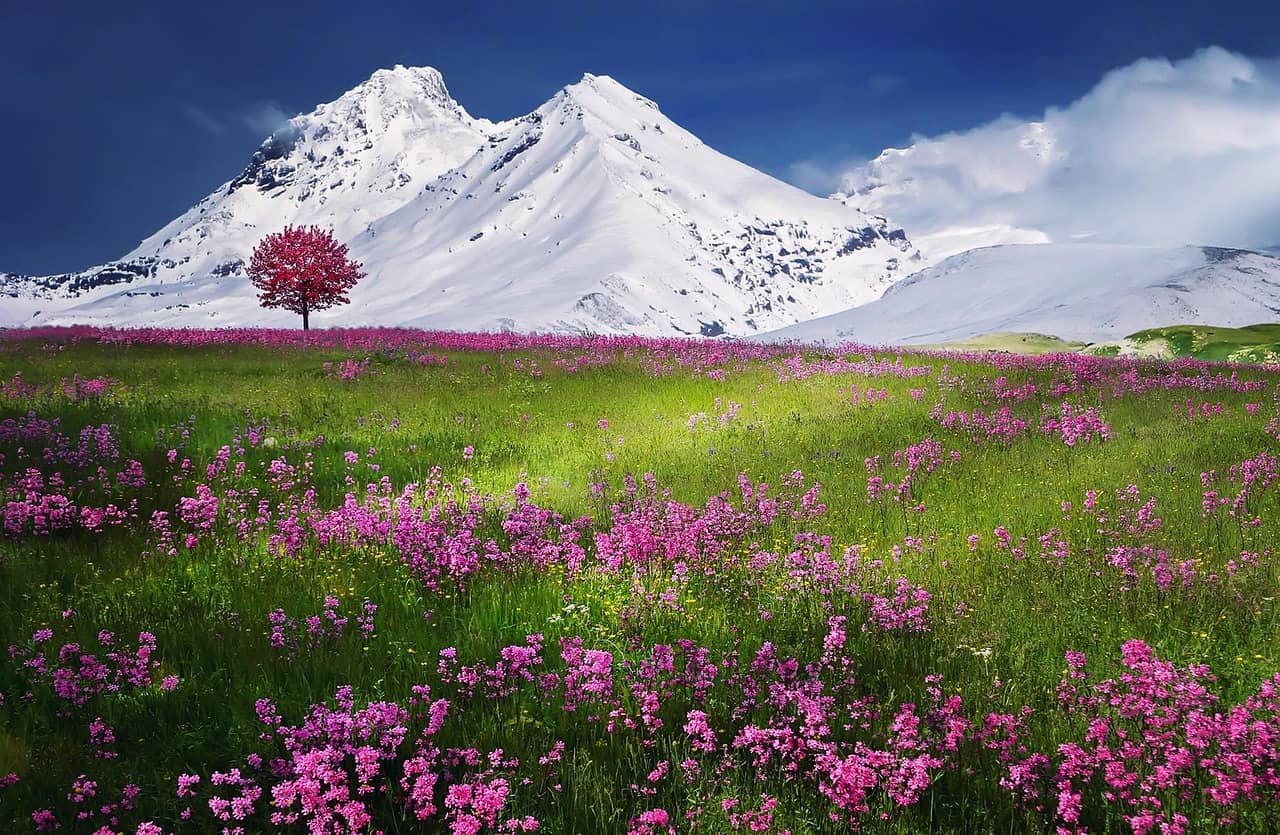
50mm prime lenses are some of the sharpest lenses you will come across. Landscape lenses are expected to be sharp when stopped down. These lenses should be able to capture corner-to-corner sharpness when shooting at slightly smaller apertures.
Even at f/1.8, these lenses are reasonably sharp though the depth of field (DoF) isn’t wide as one expects it to be. Stopping down the lens can correct that issue and increase the DoF.
For Low-Light Photography
One of the most likely situations is when a photographer shoots in low-light conditions. Not only the 50mm prime but any fast prime lens is ideally suited for low-light photography. This is because of the fast aperture that these lenses have to offer.
A typical nifty-fifty lens offers a fast aperture of f/1.8. As mentioned above, it’s two stops faster than a kit lens with a maximum aperture of f/3.5. There are kit lenses like the Nikkor 24-120mm, which opens up to only f/4.
The nifty-fifty is faster than that lens by two and a third stops. As you can imagine, this is a tremendous advantage when shooting in low-light situations.
If you’re shooting genres like weddings, low light portraits, and indoor shots, you will find the 50mm lens to be an absolute darkness crusher.
You will not require to use a flash. In any case, the camera-mounted flash is a terrible source of light. It pops and destroys the depth and dimension in your photos. I wouldn’t say I like it; professional photographers hate it too.
Rather than use a pop-flash or a camera-mounted flash, you can use a fast wide aperture lens and the ambient light source to shoot. Your exposure would be much better quality than shooting with ambient light.
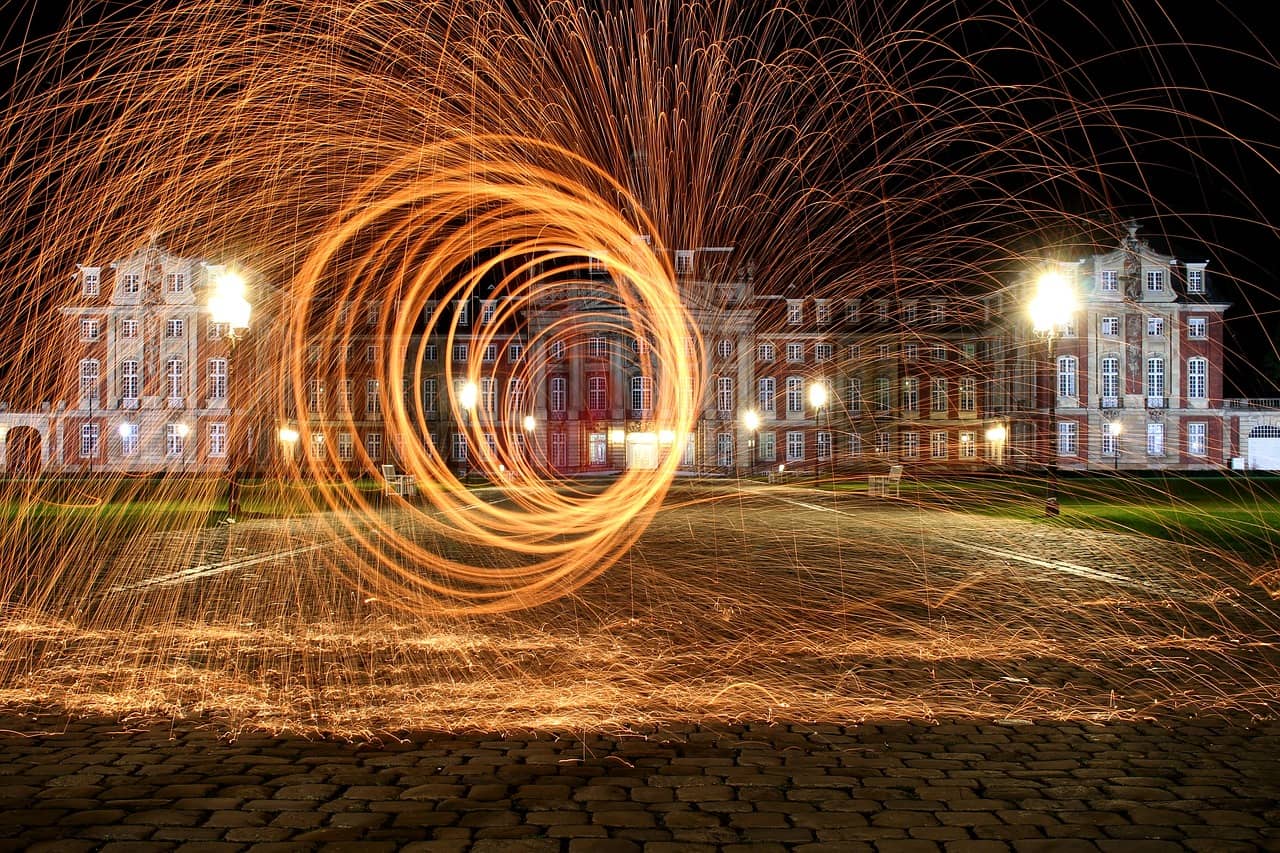
Many photographers ask if the 50mm is suitable for astrophotography. This question stems from the fact that the 50mm prime is an excellent low-light lens. So, should it also be a good lens for shooting astrophotography?
First, astrophotography is best done using a wide-angle lens, and 50mm isn’t wide-angle. Yes, it has a tremendous maximum aperture, which gives it the license to shoot low-light photos, and astrophotography, in particular, is a low-light photography genre. But the slice of the scene you’ll get with a 50mm prime isn’t the same as a 20mm or a 24mm prime.
The 50mm is a slightly longer focal length, and because of that, the angle of view possible with this lens will be smaller. A typical 50mm prime, such as the Canon EF 50mm f/1.8 STM, offers an angle of view of 46 degrees.
With a slight angle of view when you’re shooting astrophotography, if the milky way is higher up in the sky, it would be very difficult to capture the landscape with the sky and the Milky Way. There will not be enough room to fit everything in, but you can shoot a slice of the Milky Way. To get the Milky Way and a bit of the landscape, the Milky Way has to be lower on the horizon.
Another thing with astrophotography is that the longer the focal length, the shorter is the time frame for which you can keep the shutter open. Observing the 500 Rule of photography and dividing 500 by the focal length, the effective duration of the exposure comes down to only 10 seconds. That’s your threshold when shooting astrophotography with the 50mm prime. If you need more light, you will have to push the ISO.
With wide apertures such as f/1.4 and f/1.2, lenses suffer from vignetting and a few aberrations around the edges. You’ve to be careful and check your images in full size, especially around the edges, to confirm if there are aberrations at f/1.4 or f/1.2.
If it does, you can stop down the lens to f/2.4 and smaller, retake a few shots and recheck for the presence of aberrations. Usually, by f/2.8, aberrations are gone. Also, not all lenses are the same. So this technique has to be on a case-to-case basis.
Light pollution and air quality are two additional aspects that affect the quality of astrophotography that you can shoot with a 50mm prime. This is because of light pollution, and because the 50mm sees such a small part of the sky, the Milky Way is invariably lost in light pollution. So this is yet another issue you’ve to keep in mind. Air quality is an aspect that every lens suffers from when shooting astrophotography.
For Macro Photography
Macro photography captures images of small subjects and makes significant, magnified images by projecting them onto the imaging sensor.
To shoot macro photography, you must use lenses with dedicated macro properties. i.e., they’re capable of focusing on a subject from a close focusing distance.
These lenses are specially designed for macro photography. There are alternatives too, but that’s beyond the scope of this discussion. Perhaps I will discuss macro photography in detail in a later discussion. 50mm primes are not natural macro lenses. But there is a technique you can use to render macro properties to them, and that technique is to reverse-mount them onto your camera. You can reverse mount any prime lens to shoot macro, but 50mm are this technique’s most widely used lenses.

Albeit, you must remember one thing: the lens must have a physical aperture ring. Without a physical aperture ring on the lens, the lens will be stuck at the smallest aperture possible on the lens. When you reverse mount a lens, you no longer have any connection between the lens and the camera. These two are not on talking terms, meaning you no longer have autofocus and electronic aperture control.
The mechanical tab that controls the aperture is difficult to operate manually (not impossible, but difficult), and there could be issues like the tab getting damaged. That’s why it’s recommended that you only try the reverse ring technique when using a lens with an aperture ring. At least you’ve manual control over it.
For Video Photography
Is the 50mm prime a good lens for shooting video photography? The photography world seems to be split in their opinion about this lens. Let’s discuss a few of these to determine what works and does not.
The 50mm prime has a wide-open aperture and can capture much light. No wonder videographers prefer to put this lens to use for shooting videos. The vast quantity of light these lenses capture ensures that these lenses can make proper exposures in low-light conditions.
Also, the wide aperture ensures that the lens can isolate the subject from the background. This has already been stressed elsewhere in this discussion, but shallow depth of field is an excellent technique for video shooting. The 50mm primes and their fast apertures are perfect for that purpose.
Video shooters prefer a lens that can be easily focused manually. Manual focusing distance, meaning how far the manual focusing ring travels, is a significant concern.
If the focusing ring does not travel as much, it isn’t easy to focus precisely using the manual focusing ring. With many different 50mm primes in the market, with some having pretty tough manual focusing rings, those can be a real problem when you’re shooting videos with these lenses, and you can have issues. However, other 50mm primes are excellent, and these lenses are perfect in the manual focusing ring. So I suggest that when buying a 50mm prime for your camera, go to the store and check the demonstration models.
Tweak the manual focusing rings to confirm that they’re to your liking. Sometimes these rings can become a little less sticky over time. So that has to be kept in mind too.
Focus breathing is a significant problem for video shooters. Not all 50mm primes are excellent in this regard. However, the Nikkor Z 50mm f/1.2 S is an excellent lens. It has little or no discernible focus breathing, which is perfect for shooting videos with this lens. Focus breathing is something you cannot discover unless you test the lens and check for the quality firsthand.
Lack of image stabilization is a significant issue that videographers shooting videos face. Many 50mm primes don’t have image stabilization built-in. Although modern mirrorless cameras have IBIS (In-body image stabilization) that stabilizes every compatible lens image, older DSLRs don’t have IBIS. If you’re using a 50mm prime that does not have image stabilization, you need a stabilization rig to stabilize the video.
FAQs about 50mm Lens Photography
How far can a 50mm lens shoot?
The 50mm can easily focus on infinity. That means subjects far away from the camera can be captured using the lens.
That said, the lens has a focal length of only 50 mm. That means it’s slightly longer than a standard wide-angle lens and not a telephoto lens by a stretch of the imagination. That means it does not have the magnification capabilities other telephoto lenses have. So, if a subject stands too far from the camera, it will not be magnified.
A typical 50mm, such as the EF 50mm f/1.8 STM, has a maximum magnification of 0.21x, far less than the maximum magnification of a 60mm macro lens, which has a maximum magnification of 1x or 1:1.
How to get everything in focus with a 50mm lens?
It isn’t easy to bring everything into focus with a 50mm lens. There are only two options to do this, and the frame will not be in focus. The first method entails the use of the smallest aperture possible. At the start, you will have some advantages because the depth of field of your images will increase with each stop of a smaller aperture.
However, as you keep stopping the aperture down, lens diffraction will set in, and your images will start becoming softer.
The second method involves using what is known as the Hyperfocal distance. Hyperfocal distance is a measure of the focusing distance that gives the maximum depth of field based on the aperture, the focal length you’re using. Hyperfocal distance calculators available allow you to calculate the DoF on the fly.
There is a third method still, which is a spin-off of the hyperfocal distance calculator. This one requires that you focus two-thirds into the frame. That will ensure that anything at half that distance till the rest of the frame will be acceptably focused.
What is the right size filter for a 50mm lens?
The filter size of 50mm lenses depends on the size of the front element. Each lens tends to have a different filter size. Let’s take a few examples. The Canon EF 50mm f/1.8 STM has a filter thread of 49mm. The Nikkor AF-S 50mm f/1.8 G has a filter thread of 58mm. On the other hand, the Canon EF 50mm f/1.2L USM has a filter thread that’s 72mm. So, no one filter thread size goes with all 50mm lenses.
Is a 50mm lens good for travel?
A good thing about the 50mm lens is that it’s very compact and lightweight. That makes it the ideal companion when you’re traveling. Even if you love to pack two to three lenses for your travels, the 50mm prime is so lightweight and versatile that it forces you to pick it in place of something else.
Most photographers prefer to pack a 50mm prime with their primary lens. Just as a second option. The 50mm prime is a sharp lens, and the results are excellent.
Is a 50mm lens good for weddings?
Weddings are a combination of genres, such as portrait, fashion, macro, and much more.
As a wedding photographer, even if you feel like you can take every lens you own, there is a limit to the equipment you can take with you, and therein lies the challenge. You’ve to pick the best few lenses and make do with them at a wedding.
The features that make a 50mm lens one of the best for shooting weddings are its proximity to the human eye in terms of focal length, sharp features, usability, and handling. I have already discussed all of these elsewhere in this discussion, so I will not repeat myself here.
However, the 50mm prime also has its limitations. If you’re shooting weddings, the lens will not be a good option for shooting macro photos of wedding rings, shoes, accessories, etc. (unless you’re using the reverse lens technique). For that, you need a dedicated macro lens or lens that offers zoom and a bit of magnification.
Also, it would help if you moved with your feet a lot, making the 50mm a hard-working wedding photographer tool.
Wedding photography often requires a wide-angle lens for capturing those treasured group photos – the bride and the groom with the groomsmen, the bridesmaids, or the immediate close family members.
The 50mm is a bit limiting because you cannot zoom out and take a wide-angle shot. You’ve to move with your feet, and where you don’t have enough space, the 50mm will appear too long and unwieldy.
The 50mm is excellent for documentary-style weddings, and the fast wide aperture collects a lot of light and gives you excellent photos in most kinds of lighting.
Conclusion
The benefits of the 50mm prime are many. I would reiterate myself to state that it’s one of the most versatile pieces of lenses out there. There are many uses of this lens, including but not limited to portraits, street photography, everyday photography, and weddings. Photographers love the simplicity of this lens and appreciate the fast aperture that this lens comes with. A fast aperture means better light capture, especially in low-light situations, and better subject separation from the background.
Although the 50mm prime isn’t a typical portrait focal length, it can be used for shooting portraits if you know what you’re doing. A typical 50mm prime works on an APS-C camera, and the crop factor makes it an ideal focal length for shooting portraits. The effective focal length makes it 75mm (on Nikon systems) or 80mm (on Canon systems).
Additionally, not all 50mm primes are expensive. You can get a 50mm prime for anything between 150 to 300 dollars, and it would offer you all the benefits of a prime lens, including fast aperture and excellent image quality.
So, if you’re considering investing in a prime lens, don’t wait. Buy the best 50mm prime you can, which will give you returns for years.

